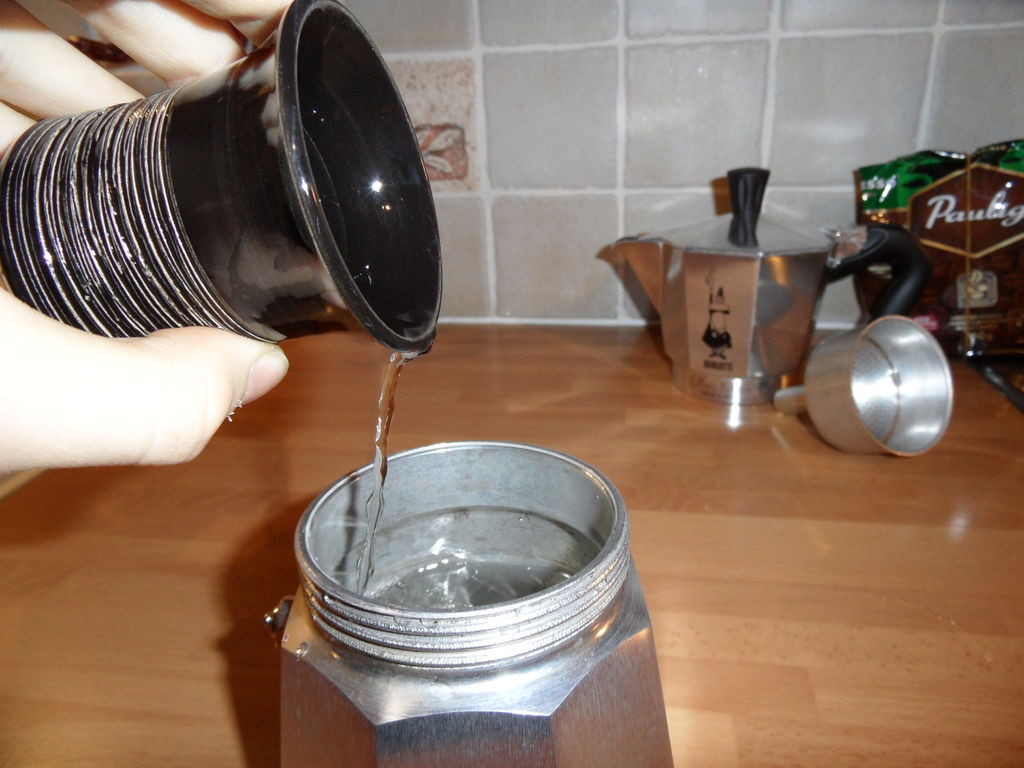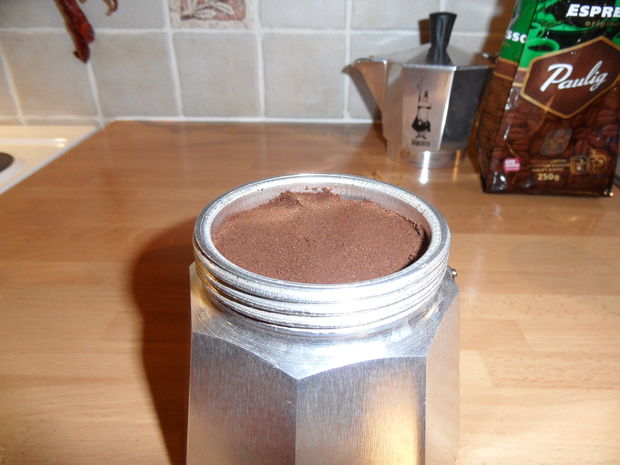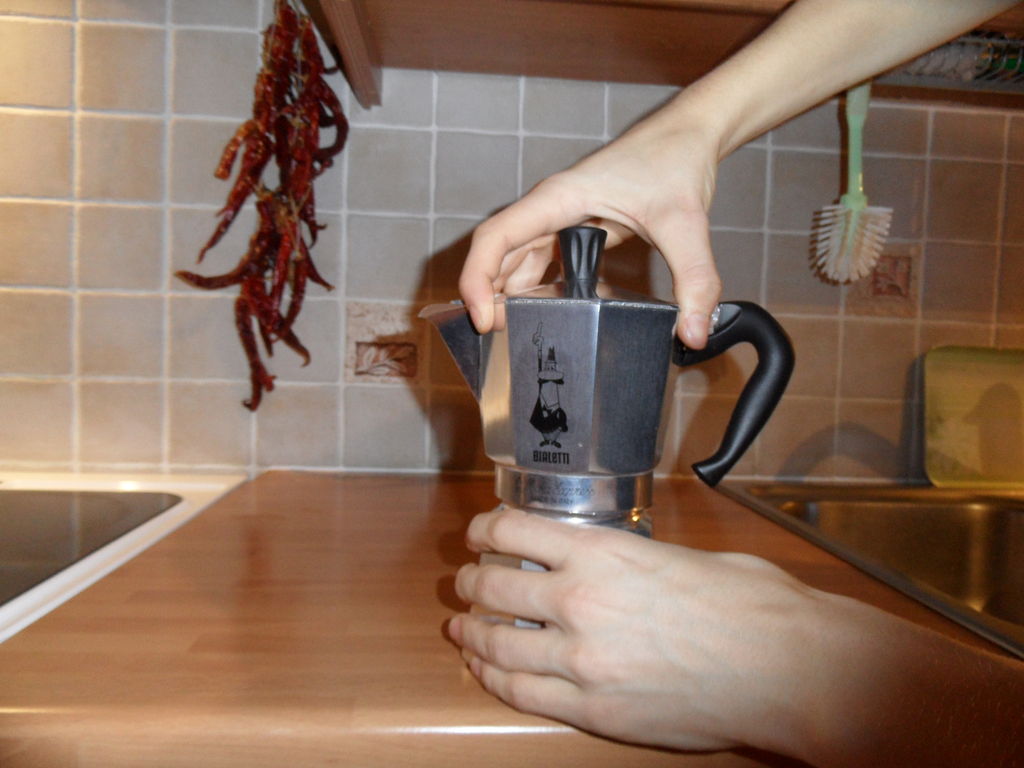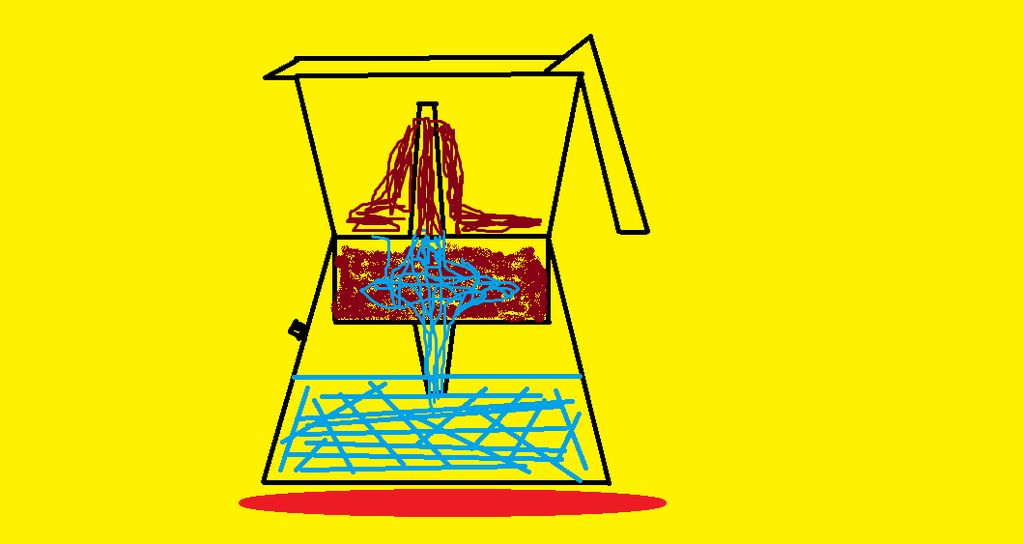Question ID: 4000-10536-1-2-3-7
Recipe Description
You're going to need just a couple of things:
-Moka pot
-Espresso grind coffee*
-Stove
-Espresso cup
*If you have a coffee grinder, then I would prefer just espresso coffee beans and grind them at home to a very fine grind, but I don't happen to have a coffee grinder so I am going to use already grind beans. Both will work fine.
Then you will need water of course, but that's kinda obvious so I propably don't have to put it on the list above.
Pour water to the bottom part of your moka pot. For full (in my case) six cups fill it to the pressure valve, but don't let the water surface touch the pressure valve (the little button looking thing). I don't know could you really make for example two cups with this six cup maker, but in the real world you'd just simply put only two cups of water in there and little less coffee grinds. I make (nearly) always two cups. And you can't make just one cup very well, because all of the water just won't come up through the coffee grinds.
Next put the filter (funnel looking thing) in place like you may see from the pictures. Then you'll just have to put there your coffee grinds. For full pot put it full of coffee grinds and little bit over (the pictures will be good again). When I make two cups, I usually put about two very heeping teaspoons of coffee grinds or something like that. You'll get it right with couple of tries. And the amount may vary on the coffee brand you're using - some might taste better with little less or more grinds.
They say that you shouldn't tamp the grinds at all, but I like to just smooth the surface with very little pressure. Be sure that the coffee grinds are only in the "funnel" part, not on the threads. Do not tamp like you'd do with the other kind of espresso makers.
What do you call those..?
Then you need to screw the top part on. Screw it on pretty tight, but you really don't have to twist as hard as you can, just so it stays on well and won't leak. And before screwing on, you should check is the gasket on the top part okay. If not, you should buy new one. They might have those gaskets there where you have bought your moka pot. This part is really the easiest, but I just wanted to write more than "Screw on the top".
Turn on your stove to the highest temperature. Place your moka pot on the stove with the pot's lid closed. Any stovetype works, except induction stoves. For them you'll need a special moka pot.
After a little while you will start hearing a little "noise" which is the water boiling and distilling through the coffee grinds and up to the top. When the noise gets louder take the pot off the stove. Now your espresso is ready.
You shouldn't have your lid open like on my second picture below, because the coffee can squirt from there, and it's hot. So be careful. Actually when coffee starts comming up, it propably (by my experience) won't squirt at all, but when the louder noise starts up, it may and will come out "violently". Anyways, keeping the lid closed won't do anything bad to you - you really don't need to see there, the sound tells it all.
Pour your finished espresso into your espresso cup or froth some milk and make a cappucino or a latte. You'll find instructions for those from somewhere else.
Enjoy your delicious espresso! Next how to wash a moka pot.
Do not put your moka pot into washing machine. You'll need to wash it up by hands, literally. You're gonna use only water and your hands. Simply:
1. Open your pot
2. Throw away your used coffee grinds
3. Wash the filter part under running water
4. Do the same to other parts too
5. DryDo not use dishwashing soap. It might eat away your pot. If your pot gets somehow very dirty, you could use boiling water and some sort of brush and maybe just a tiny bit of dishwashing soap. If (and propably is) your pot is made of aluminium, you could use some aluminium washing soap (made for dishes).
Seriously, I think using soap won't really eat a way your pot immediately, but they say that it's not good for it so I wouldn't use it anyway.
The way a moka pot works is fairly simple: water boils and vaporizes and the water vapour forces the not vapourized to rise up through the coffee grinds with a little pressure and then travels its way up. I drew a "great" demonstrating picture. Not the greatest, but I think you can figure out how it works from this text and the picture below.
Thank you!
Question & Answer
Question: What is the correct order of the images?
Choices:
    |
| (A) |
    |
| (B) |
    |
| (C) |
    |
| (D) |
    |
|---|
 (A) (A) |